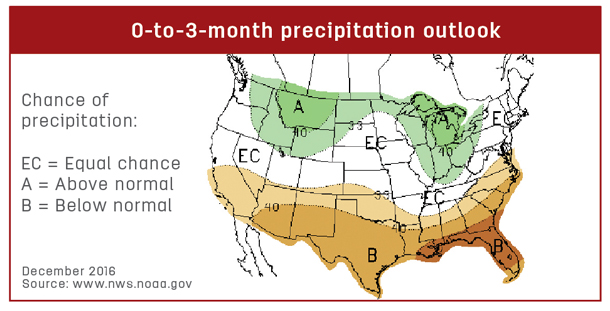Pasture bloat is a frothy or foamy bloat that arises when gas produced from highly fermentable sugars is trapped in tiny bubbles that cannot burst because of increased surface tension caused by soluble proteins in the forages.
 Bloat potential cannot be completely eliminated, but measures can be taken during the grazing season to reduce the incidence, severity and losses from bloat:
Bloat potential cannot be completely eliminated, but measures can be taken during the grazing season to reduce the incidence, severity and losses from bloat:
-
Be aware of the times of year when bloat usually occurs and begin preventative management before this time period.
-
Avoid turning hungry cattle onto bloat-provocative forages. Filling cattle with dry forage before turning out will slow grazing activity immediately following turnout. When rotationally grazing, time movements such that cattle are satiated and not overly aggressive when moved.
-
Provide palatable, dry forage during bloat-prone periods to increase rumination and saliva production.
-
Provide access to poloxalene (ingredient in Bloat-guard), an anti-foaming agent. Poloxalene must be consumed daily by all cattle on the pasture in order to be most effective.
Offer poloxalene in a palatable feed product, place self-fed products near water, and begin feeding in advance of a bloat-prone period so cattle learn to consume the feed.
-
Incorporate an ionophore (Rumensin and Bovatec) in feed and mineral supplements. Ionophores are typically fed to enhance weight gain by stockers, but research has shown an added benefit in that ionophores can reduce the incidence and severity of bloat.
These additives can be delivered in hand-fed supplements or in approved self-fed feed products.
-
Identify cattle that bloat and require hands-on attention. Some cattle are chronic bloaters. The best approach for the well-being of the animal may be to remove them from the pasture.
-
Know how to attend to a bloated calf. Not all cattle will require individual attention. But in the instance of severe bloat, immediate action is necessary.
Because of the frothy gas accumulation, a stomach tube may not be effective. A trocar may be required to immediately release gas and save the calf. A stomach tube can be used to dose a surfactant or anti-foaming agent into the rumen.
Check with your veterinarian for a refresher on handling bloated calves and put together a bloat kit with the items necessary to handle a bloated calf.
F.T. McCollum III is a beef cattle production specialist with Texas A&M AgriLife Extension Service. Email F.T. McCollum III.







